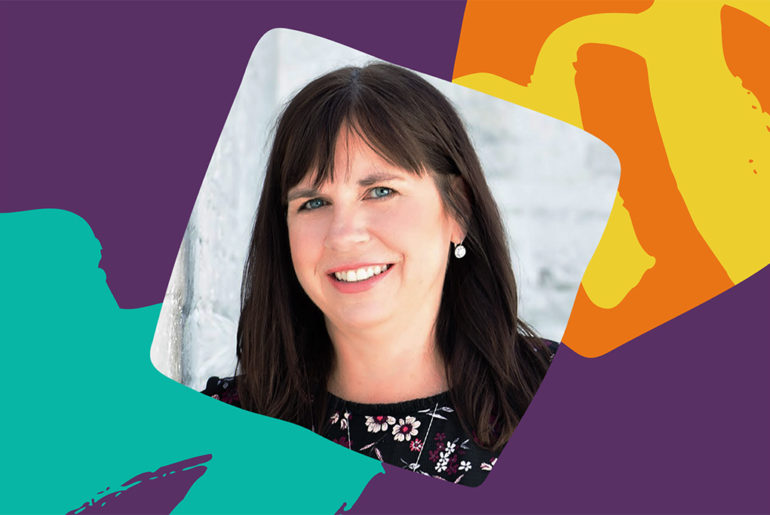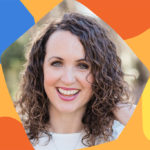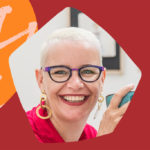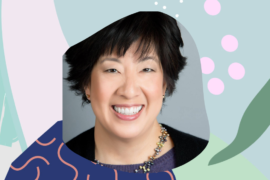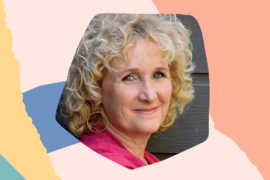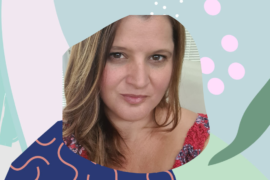Key Takeaways
- How Dr. Barbera dove head-first into the world of autism. She explains why it’s so hard for many parents of autistic children to get access to the resources and support they need.
- Why Dr. Barbera launched her first online courses and how this naturally led to creating her first membership site.
- How to authentically provide multiple tiers of services and resources to your current students without being pushy, sales-y, or dishonest in any way.
- Why doing great work always leads to recurring revenue.
Free Give
 FREE Guide – Launch & Grow a Profitable Membership Site
FREE Guide – Launch & Grow a Profitable Membership Site
Ready to reclaim your time and attract more monthly paying customers? Our step-by-step guide will show you how to build a membership site that turns your passion into recurring profit. Click here to download!
Memorable Quote
I am really on a mission. I set a goal that I’m going to turn autism around for 2 million kids by 2020.” – Dr. Mary Barbera
Episode Resources
MaryBarbera.com The Verbal Behavior Approach: How to Teach Children with Autism and Related Disorders Is it Autism, ADHD or Typical Toddler Tantrums? Three Things You Could Do Today Instead Of Worrying LaunchCon Launch: An Internet Millionaire’s Secret Formula To Sell Almost Anything Online, Build A Business You Love, And Live The Life Of Your DreamsTranscript
Read The Transcript
Shelli: Dr. Mary Barbera, thank you for joining us on the It’s A TRIBE Thing Podcast. How are you doing?
Mary: I’m doing great. Thanks. Thanks for having me.
Shelli: I’m so privileged that you’re here because not only am I excited to tell your journey, your business journey, but I think the messaging in your area of expertise is going to be super, super valuable for our listeners so I really appreciate you taking the time.
Mary: I’m happy to be here.
Shelli: I like to start off at the top if you don’t mind by asking you for the sake of the listeners who you are, what you do, and who you serve.
Mary: Okay. So, I am Mary Barbera and I am in the autism world. I fell into the autism world in 1999 when my firstborn son, Lucas, was diagnosed with autism one day before his third birthday. I was a master’s-prepared nurse at the time, married to a physician, but I really knew almost nothing about autism and nothing about the treatment so was a confused, overwhelmed parent who basically over the past two decades, figured out how to teach children all across the autism spectrum whether they have very mild issues or very severe autism, how to teach those kids, well, teach parents and professionals how to teach their kids how to talk, how to follow directions, get them potty trained, sleep their own bed throughout the night, eat a variety of foods, and just all the things that kids usually develop on their own without explicit teaching. So, in the process, I became a behavior analyst, wrote a best-selling book, that’s in ten languages, called the verbal behavior approach, how to teach children with autism and related disorders. I earned a Ph.D. and I started online courses back in March of 2015.
Shelli: That’s incredible. That’s the best like two minutes synopsis of a person’s journey I may have ever heard.
Mary: Oh, thank you.
Shelli: So much so, I’m wondering if we can go back to the beginning of your story and sort of the discovery of your son being just before he was diagnosed and what that looked like for you in terms of your learning curve because like at some point, you develop skills and I feel like from our brief chat, some of them innately and some of them by trial and error, and then you add on into your toolbox the behavioral stuff and then come up with this arsenal of people or arsenal of tools that it’s going to be able to help so many people and I was just wondering what that transition was like for you as you are experiencing it.
Mary: Well, my husband, who like I said is a physician, he first mentioned the possibility that Lucas might have autism back in 1998, early 1998, after my second son, Spencer, was born and I freaked out. I had never thought of that Lucas was, you know, is speaking a little bit. He had a few words, he was 21 months old. So, it’s confusing like I wasn’t a developmental expert, but my husband probably knew what he should be doing more and I think what concerned my husband was that Lucas really had like very little awareness of the baby and that there was no like, “Mommy is pregnant. Are you happy to be a big brother?” He was like completely disinterested on those sorts of things. So, I remember the day my husband first mentioned the possibility of autism. I told him I never ever want to hear the word autism again.
Shelli: Emotional reaction in you I would imagine.
Mary: Yeah. And I went into a really big state of denial for over a year and points people were falsely reassuring me and Lucas went to typical preschool without any help like he wasn’t doing anything outrageous. He was going to speech therapy like I just thought, “Oh, it’s going to be okay,” and that whole year, actually almost 15 months of denial really, really hurt Lucas in the end because I didn’t know at that point. But it was proven in the late 1980s, a full decade before Lucas’s diagnosis and three decades from today, was proven in the 80s that kids with autism could actually recover or become all better, become indistinguishable from their peers if treated very aggressively very early on. So, really when I found that out after a year of denial, I was like, “Oh my God, I have got to get on this,” like I didn’t know that. And the thing is, is that people don’t know that. I actually presented at LaunchCon this year with Jeff Walker to almost 900 people there, all entrepreneurs, non-autism people, and I asked the audience how many people know somebody with autism and probably 95% of the crowd raised their hands.
Shelli: Wow.
Mary: And then I said how many of you know that autism can be recovered in some cases? Like my son is not recovered in no way, but how many know that recovery is possible, especially if treated very early and aggressively? And like a handful of people out 900 raised their hands. So, it’s still not known and that’s really what I’m all about. That’s why I’m excited to be here today to spread the word that autism is definitely treatable, and even the kids don’t recover like my son Lucas he’s 22 years old now, they can learn how to talk, how to talk earlier, how to potty train, how to tie their shoes, ride a bike. This autism spectrum is huge going from very severe to very high functioning. I have clients that are going to college now and those sorts of things. It’s all over the place, but the key is don’t get yourself and don’t let yourself go into denial and also now another huge problem is that even if you’re not in denial, you go to the pediatrician and you say, “I think my son might have autism,” and it’s, “Okay. We’ll get you to a developmental pediatrician,” and you know what the wait time is? Nine months to two years.
Shelli: Oh, my goodness.
Mary: So, that’s the most critical window and the rate of autism has also climbed from when Lucas was diagnosed two decades ago, one in 500 kids are affected to now, I mean, I just showed a graph that said one in 29 kids are affected. I mean, it’s just craziness, the explosion of autism, the waiting list, and very few people know that aggressive behavioral treatment is definitely warranted.
Shelli: Well, it’s fascinating to me that sometimes challenges get put in certain people’s way and you strike me as one of those people only because you face this incredible challenge and I’m sure were overwhelmed and confused at the start when you’re trying to figure like what is this going to look like or can we just pretend that it’s not going on for the moment and the emotions that go along with that, but your commitment to finding a solution and being a light in the darkness for other people that are coming behind you is jaw-dropping.
Mary: Thank you. Thank you. I mean I am just really on a mission. I set a goal that I’m going to turn autism around for 2 million kids by 2020. So, I am like a dog with a bone and I’m on a mission to let people know that don’t be in denial. If there’s any kind of delay or difference, look under the hood and, yeah, I have resources, MaryBarbera.com. I have lots of resources to get into my world and I have a resource at MaryBarbera.com/Toddler called Is it Autism, ADHD or Typical Toddler Tantrums? Three Things You Could Do Today Instead Of Worrying, and it’s like I wish I would’ve had these resources. I have free online workshops, and just a variety of things to get people into my world.
Shelli: Well, I love what you said. You said, you used the term let people know and one of the ways that you’re letting people know, yes, all of these resources, but also the inception of your own membership site so that for those people that basically are going through what you went through years back when you were confused and just needed some emotional support, and maybe some guidance and I’m sure probably community and support as well are able to offer something to those individuals that you probably would have needed at that time.
Mary: Yeah. So, I actually have a backend membership program so I’m not sure if the listeners know what that is or if I should explain.
Shelli: Yeah. If you could explain that, that’d be great.
Mary: Okay. So, in late 2014, I read a great book which really helped me. It was called Launch by Jeff Walker and there I finally kind of had a guide about how to start an online course because before that, I was kind of just going door-to-door, helping individual clients, and I was also speaking, doing keynotes all around the world and neither of those are efficient ways to spread this word. So, I read the book and in March of 2015, I started my first online course called Autism ABA Help Online Training For Professionals And Gung Ho Parents and I had no idea what I was doing and I charged at the time, $297. I didn’t know if zero people were going to buy or 300 people were going to buy but I just like put one foot in front of the other and I did what Jeff Walker calls the Speed Launch. So, I had about 50 people purchase the course which at the time came in 2015 a lot of courses were like lifetime access and I’m like, “I can’t do lifetime access. I don’t even know what I’m doing. I don’t know if I’m going to like this. I don’t know if it’s going to work. I don’t know if it’s going to bomb.” So, instead of doing lifetime access, I just said, “It was a five-week course. You’d have 90 days of access,” or something like that. So, it was live or it wasn’t live but I drifted out so it was like you had to be in Cohort 1. It was the beta group and it actually worked and I created the course as I went every week and I created the next module.
So, that Cohort 1 got done and that was March and then in June, we said, “Okay. Let’s do it again. We’ll bring on Cohort 2.” And at the time I said to Cohort 1, “You know what I said it was going to be 90 days of access but you just stay in the Facebook group. You could still have the modules and everything.” So, brought in Cohort 2 and then the people in Cohort 1 and Cohort 2 were like, “This is awesome.” I’m just getting great testimonials and case studies and everything and they were like literally begging me for a more advanced course, like how to teach prepositions and colors and reading, math, writing, self-care, all those things that my book, written a decade ago, that’s in 10 languages is really more for early learners, more of the stuff that was in my early learner course, but I was also an expert in more intermediate learners. So, I said, “I will create that. You got to pay me like a beta test, you know, beta group B, get enrolled in that. I don’t know how long that’s going to take me.” It took me more than a year, but I said, at the same time, “If you want to stay within the group, you’re going to have to also pay me $30 a month.” So, I created an accidental membership program.
Shelli: The accidental membership program.
Mary: Yeah. And so, I still have people paying me from 2015, which is awesome, and then now I have another course for parents of toddlers to try to swoop in and catch them early like you don’t even have to have autism. You can just have signs of autism or it could be speech later or anything and so I have a third course. So, I have my original course for parents and professionals, my intermediate course. They are now sold as a bundle and then I have the toddler course. So, everything is on evergreen and then the membership comes after the access period.
Shelli: Got it. I’m curious to know like I’m sure the support that your community offers both in terms of the information and the expertise that you have but also being part of a group of other people that have similar challenges and can relate to and support you up and shore you up in terms of the emotional side of it is probably significant. I’m curious to know what’s the best testimonial or feedback that you have received.
Mary: I think my kind of favorite testimonial if you will, and she’s actually my community manager of my Facebook page, is a woman named Kelsey who’s a single mom of two boys and she found my course. She lives in Canada. I’ve never met her in person and she found my course two years ago in the fall and she was driving her son, hurled her son, Brentley, to an ABA clinic, Applied Behavior Analysis clinic an hour each way. They were trying to teach him things like colors, even though he wasn’t ready for that, and he was also very dangerous in the community like he’d run out the clinic doors and into the street and if she took him out into the community, she would need a leash and a harness and she had her baby, Lincoln, strapped to her too. And Brentley was banging his head on hard surfaces 60 times a day. He was speaking a little bit, but she didn’t know really how to get him to talk more or talk differently or whatever, and she found my course and she went all in and pretty much at the end of the course or a few weeks into it, she realized that the ABA clinic really wasn’t doing the best service for him. It was paid for by insurance, and that’s like people think like, “Well, it’s paid for,” or, “The speech therapist comes every week.” It’s like if it’s not working, it doesn’t matter who’s paying. This is your child’s life.
So, anyway, she ended up withdrawing him from the clinic and teaching him at home and then her younger son was showing signs and so now she was very active in our toddler group and almost like a community manager there and then Lincoln also diagnosed then. And so, but by the time Lincoln got diagnosed, Kelsey knew how to teach him language, how to teach him not to tantrum. And so, he’s caught up language wise even though he’s still on the spectrum and now Brentley is not banging his head. He doesn’t need a leash and a harness. He’s happy. He’s talking in short phrases and so like that, to me, now he’s requesting to like go climb a mountain. They’re very outdoorsy. They live in Canada and it’s like it’s so great because I mean she puts them in front of a canoe. She’s got these gorgeous pictures of him in the front of a canoe. I mean, how could she have brought him anywhere safely? And so, that is just really awesome.
Shelli: It’s amazing to me. I’m always somebody who likes to reverse engineer things and kind of trace it back to the root and it’s so fascinating that you start this online business courses and membership site and have gone through all of this huge experience for yourself in behavior therapy and Ph.D. and all that kind of stuff. You pull the trigger on an online business so that you can scale, so that you can reach more people, and you get a testimonial or feedback like that, and the ripple effect of the lives you’ve changed as a result of you deciding to say yes, deciding to move forward is incredible for the difference that it’ll make in those kids’ lives going forward. When you think about it, it’s amazing.
Mary: Yeah. And I have people from over 60 countries who have taken my course so far and are in my online membership both about a 50-50 split between professionals and parents and is it’s a really supportive community and, I mean, Kelsey is just one of literally like hundreds of stories I could tell you. And you know, it’s awesome because I would get an occasional email, “Oh, I read your book and I taught my child to talk,” or whatever, like that which is awesome but I wasn’t 100% sure I could make this kind of an impact without ever meeting anybody or even personally reviewing the videos or anything. This is like really like Kelsey took the course and, I mean, only after she was done the first course did we even talk about like, I mean, she was just posting a lot so I did a Zoom interview and got a testimonial and I was like, “Oh my God,” like I didn’t even know he was banging his head. And I only knew half the story.
Shelli: So, one last question for you. What is your ultimate vision for your membership site, your business, and the reach and difference you want to create in the world?
Mary: You know, I am open to possibilities with my membership site. I did really look into potentially like a front-end membership but I really feel like this isn’t – I don’t want a membership where people are just going to sit around and be depressed and complain like they pretty much have to take my course in order to understand it’s a big paradigm shift. I’m a behavior analyst. Even for behavior analyst who’ve read my book, who kind of know what I know, it is a whole different way to tackle autism and so I kind of put that front end membership at least on hold maybe forever and I might do a higher end membership in addition to my, you know, backend membership because I do think that people need to apply the information. I could potentially eventually create a certification or coaching system or something because, I mean, while Kelsey could do it and roll up her sleeves and go step-by-step and it worked, there are still a lot of people struggling and I know how much help I need with different things. It’s like this is important. If they’re doing something wrong for two or three months, they see my video but then when they apply it, things don’t go well, I mean, it would really be probably in my future to create like more train-the-trainer, more coaching, and certification, and that sort of thing. I mean, at this point, I just need to keep flying the plane and see where I go, but, I mean, definitely keeping the backend membership has been just a great thing and now we just have to see what makes the most sense.
Shelli: Absolutely. And because what you’re doing is such important work, it is pretty vital for them to be in your ecosystem and learn and understand and know the way you do what you do and also be committed to being a changemaker in the lives of their kids and how they’re going to roll out your information is brilliant.
Mary: Right. Yeah.
Shelli: If people are looking for you online, where is the best place they can find you?
Mary: So, MaryBarbera.com will get you to my main website and if you can search there, in the middle of the website are free workshops that you can attend and then that’s pretty much the only way into my online course and my membership. And if you can’t figure out how to spell my name or you’re out and about, you just type Mary and autism or autism and Mary and I’m the first one that pops up. So, yeah, it’s just been my passion and I hope to help both toddlers with just early warning signs all the way up to adults. And mostly like if you have a really high functioning kid that’s going to college or at this point or even fully mainstream, fully conversational at this point, my real focus is young kids no matter what level they’re at because even if you just think that your young child might have very mild autism, it’s better to turn up the burners and give them really like treat it like it’s severe autism because you don’t want to like think back and go like, “Ooh, I should’ve given him more treatment.”
Shelli: Yeah. Coulda, woulda, shoulda.
Mary: But then I’d say over the age of five or six then I mostly concentrate on kids who have the language ability of a toddler or a preschooler so there was that remain in pair with moderate to severe autism. Because the spectrum is so wide, there is a lot of need for higher functioning kids, but my main focus is to try to get the little ones as soon as the first signs appear, that’s my main goal because that’s the easiest to treat, the most turnaround, the best prognosis, and that’s my main goal and then also to help people with moderate to severe autism. Yeah. So, MaryBarbera.com or just google Mary and autism and I will show up.
Shelli: Brilliant. That’s when you know you’re doing things right in the world when you type your first name and your topic and then there you show up so good for you. I want to honor you and the work that you’re doing in the world and I want to thank you so much for taking the time to hang out with us on It’s A TRIBE Thing. Thank you so much.
Mary: It’s been a pleasure. Thanks so much for having me.
